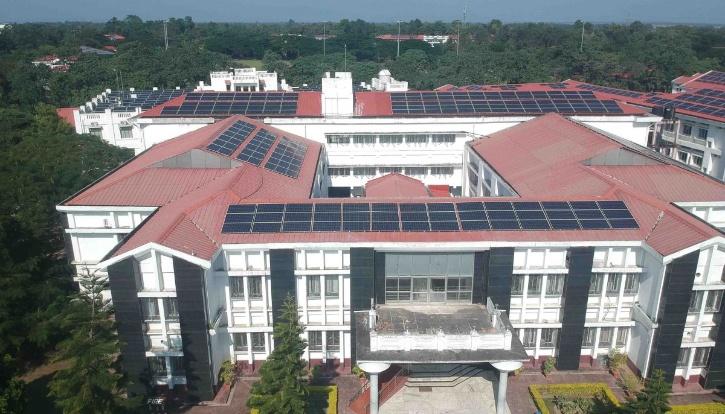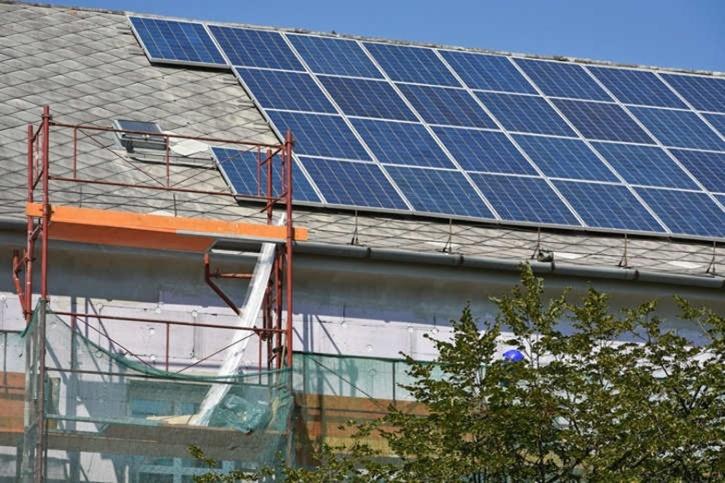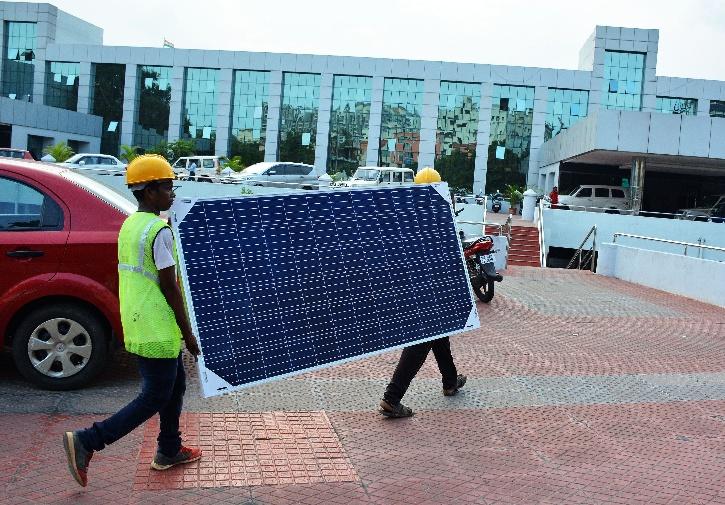
Around the world, there is a growing awareness on the ill-effects of the dependence on non-renewable energy sources and the need for switching to more eco-friendly and renewable sources to generate power.
One of the most popular renewable sources to generate power is the sun and around the world, the generation of solar energy has been on the rise.
In India, too solar energy generation is on the rise for the past few years and it is only going to scale up further in the coming days.
The Tezpur University in Assam has become the latest to embrace renewable energy and has been generating an average of nearly 90,000 kilowatts of electricity every month through solar power.
The central university has so far generated 19,68,345 kW of energy from October 2018 to July 2020 by installing solar panels on the roofs of 15 buildings in the campus.

“The maximum generation in one day is 5,938 kW and the average daily generation during this period is 2,949 kW,” it said in a statement.
The highest amount of electricity in a single month was generated in August 2019 (1,12,149 kW), the varsity said.
“The university also reduced 1,614 tons of carbon dioxide (CO2) emission due to solar power generation during this period,” the statement said.
In order to develop sustainable buildings, Tezpur University has installed 1,000 kilowatt peak (kWp) rooftop grid connected solar power plant by Solar Energy Corporation of India (SECI) under RESCO (Renewable Energy Service Company) mode.

“The university purchases electricity from Assam Power Distribution Company Ltd at the rate of Rs 6.60 per kW, whereas the solar power plant generated electricity cost is Rs 2.42 per kW. Solar rooftop scheme is much cheaper than buying electricity at commercial rates,” Department of Energy Associate Professor Sadhan Mahapatra said.
Rooftop solar power projects have several advantages like savings in transmission and distribution, low gestation time, reduction in electricity bill and saving of battery, said the faculty member, who is associated with the project as coordinator.
24% monthly power consumption replaced
With this initiative, the university has been able to effectively replace 24 per cent of its monthly electricity consumption from the conventional mode, it said in a statement.
Tezpur University Registrar Biren Das said: “We are the first academic institution to initiate the installation of megawatt scale rooftop grid connected solar photovoltaic power plants in the entire North Eastern region.”

Recently, it was reported that India’s wind and solar share rose from three per cent of the total generation in 2015, to 10 per cent in the first half of 2020; at the same time coal’s share fell from 77 to 68 per cent.
Wind and solar generation grew by 13 per cent in first half of 2020 compared to the same period last year (in comparison to 14 per cent growth globally), and that meant wind and solar generated 9.7 per cent of India’s electricity (compared to 9.8 per cent globally).

















